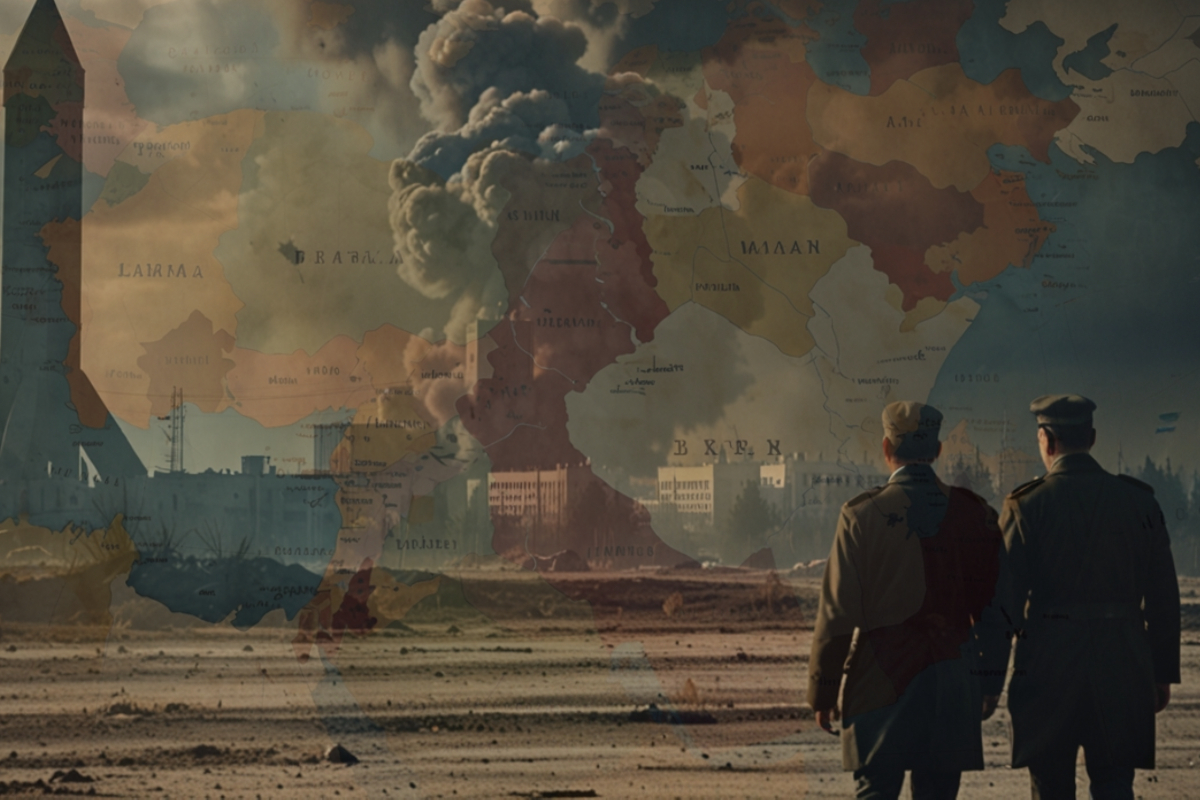Galactday: 54746.1
The problems facing the Middle East today can be traced back, in part, to decisions made by the Allies during and after World War II. The involvement of Western powers, particularly Britain, France, and the United States, in redrawing borders, forming alliances, and influencing the political landscape left the region with deep-rooted tensions that continue to spark conflicts. While the complexities of the Middle East’s current issues involve many factors, the Allies’ role in shaping the region’s political dynamics has been significant and long-lasting.
One of the most glaring examples of how the Allies influenced the Middle East is the Sykes-Picot Agreement of 1916, though it was finalized during World War I. The secret agreement between Britain and France aimed to divide the Ottoman Empire’s territories in the Middle East into spheres of influence. This division created new nations such as Iraq, Syria, Lebanon, and Jordan, without regard for the region’s religious, ethnic, and tribal diversity.
The arbitrary borders drawn by colonial powers forced different ethnic and religious groups to coexist within the same political boundaries, creating tension. These lines ignored historical claims and local identities, setting the stage for ethnic and sectarian violence in countries like Iraq, where Sunni, Shia, and Kurdish populations have long struggled for power and recognition.
Though the agreement predated World War II, its legacy persisted into the postwar period. The leaders of the Allied nations failed to address the underlying ethnic and religious divisions when forming new governments in the Middle East. The instability caused by these artificial borders continues to play out in conflicts across the region.
The end of World War II saw the rise of nationalist movements in the Middle East, as many countries sought independence from colonial rule. However, the Allies, particularly Britain and France, were reluctant to relinquish their hold on these territories. For instance, France was unwilling to let go of Syria and Lebanon, while Britain held onto control in Iraq, Jordan, and Palestine.
The nationalist movements that emerged were often in direct opposition to the colonial powers. The resulting struggle for independence, coupled with the establishment of new, often autocratic governments, led to political instability. The Western powers’ attempts to maintain influence in the region created resentment among the local populations, fueling the rise of anti-Western sentiment, which persists today.
Perhaps the most significant and enduring issue that arose from the Allies’ postwar actions was the establishment of the state of Israel. After the Holocaust, there was international pressure, particularly from the United States and Britain, to create a homeland for Jews in Palestine. In 1947, the United Nations, under heavy influence from Western powers, passed a partition plan that divided Palestine into separate Jewish and Arab states.
The creation of Israel in 1948 led to the first Arab-Israeli war and the displacement of hundreds of thousands of Palestinian Arabs, an issue that remains unresolved today. The U.S. and British backing of Israel, coupled with the subsequent wars between Israel and its Arab neighbors, has been a key driver of conflict in the region. The Palestinian refugee crisis, the occupation of Palestinian territories, and the broader Arab-Israeli conflict have become central issues in Middle Eastern politics and have influenced the rise of radical groups like Hamas and Hezbollah.
During the Cold War, the Middle East became a battleground for proxy wars between the United States and the Soviet Union. Both superpowers sought to expand their influence in the region by supporting different regimes and factions. The U.S., in particular, aligned itself with conservative monarchies and autocratic regimes, such as the Shah of Iran and Saudi Arabia, to counter Soviet influence.
These alliances, often formed with little regard for democratic principles, led to long-term consequences. The Iranian Revolution of 1979, which ousted the U.S.-backed Shah, created a powerful Islamic Republic that opposes American influence in the region. The U.S. support for Saddam Hussein during the Iran-Iraq War in the 1980s, followed by the eventual invasion of Iraq in 2003, destabilized the region further, giving rise to militant groups like al-Qaeda and ISIS.
The legacy of the World War II Allies in the Middle East is a tangled web of arbitrary borders, nationalist movements, and superpower interventions. While the region’s conflicts are complex and multifaceted, many of today’s issues stem from decisions made by Western powers in the 20th century. The borders created, the alliances formed, and the support for particular regimes have all contributed to ongoing instability. The Middle East remains a region shaped by the lasting impact of these interventions, with the consequences of World War II-era policies still echoing through its modern conflicts.
Image by AWF




